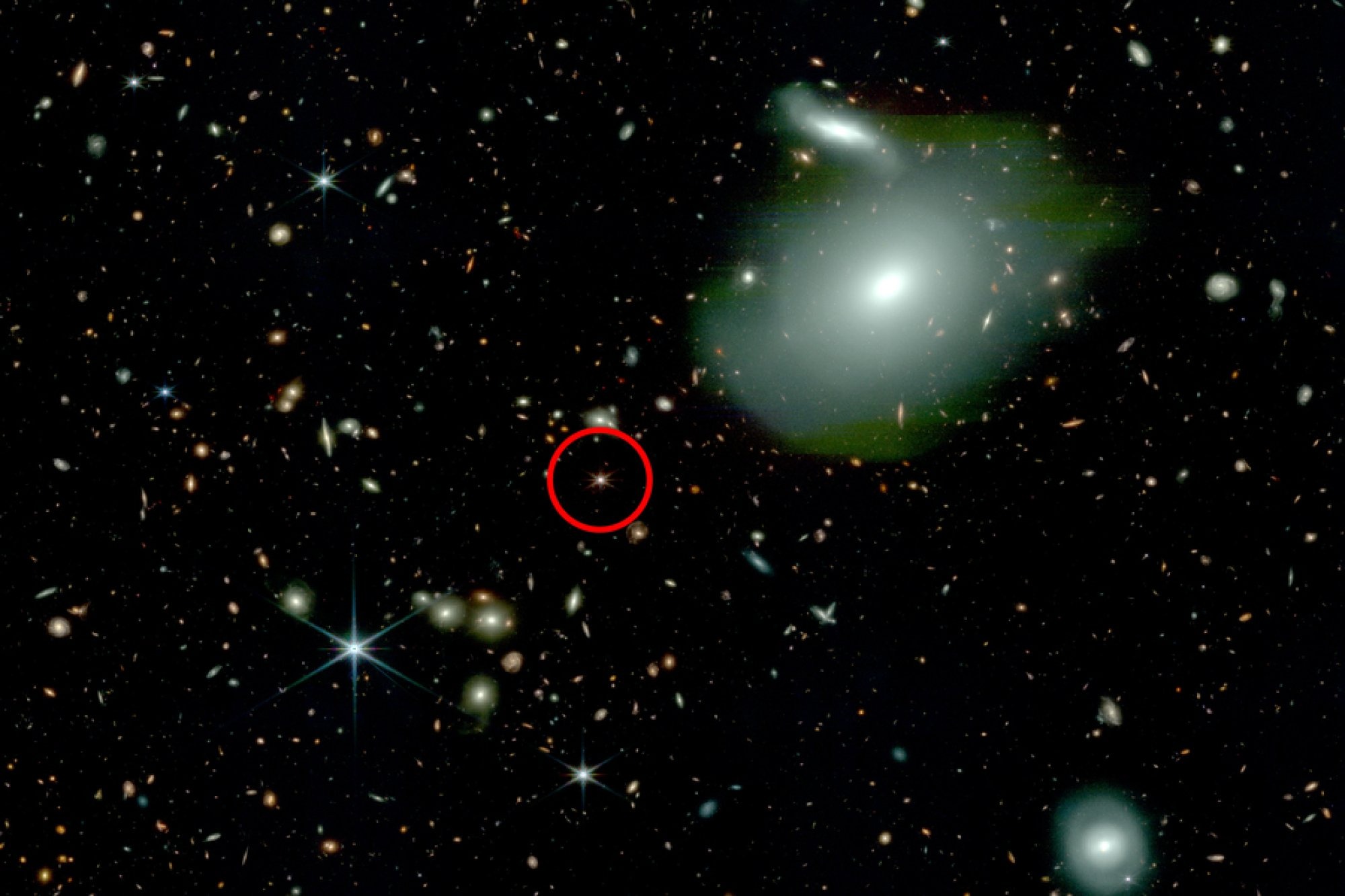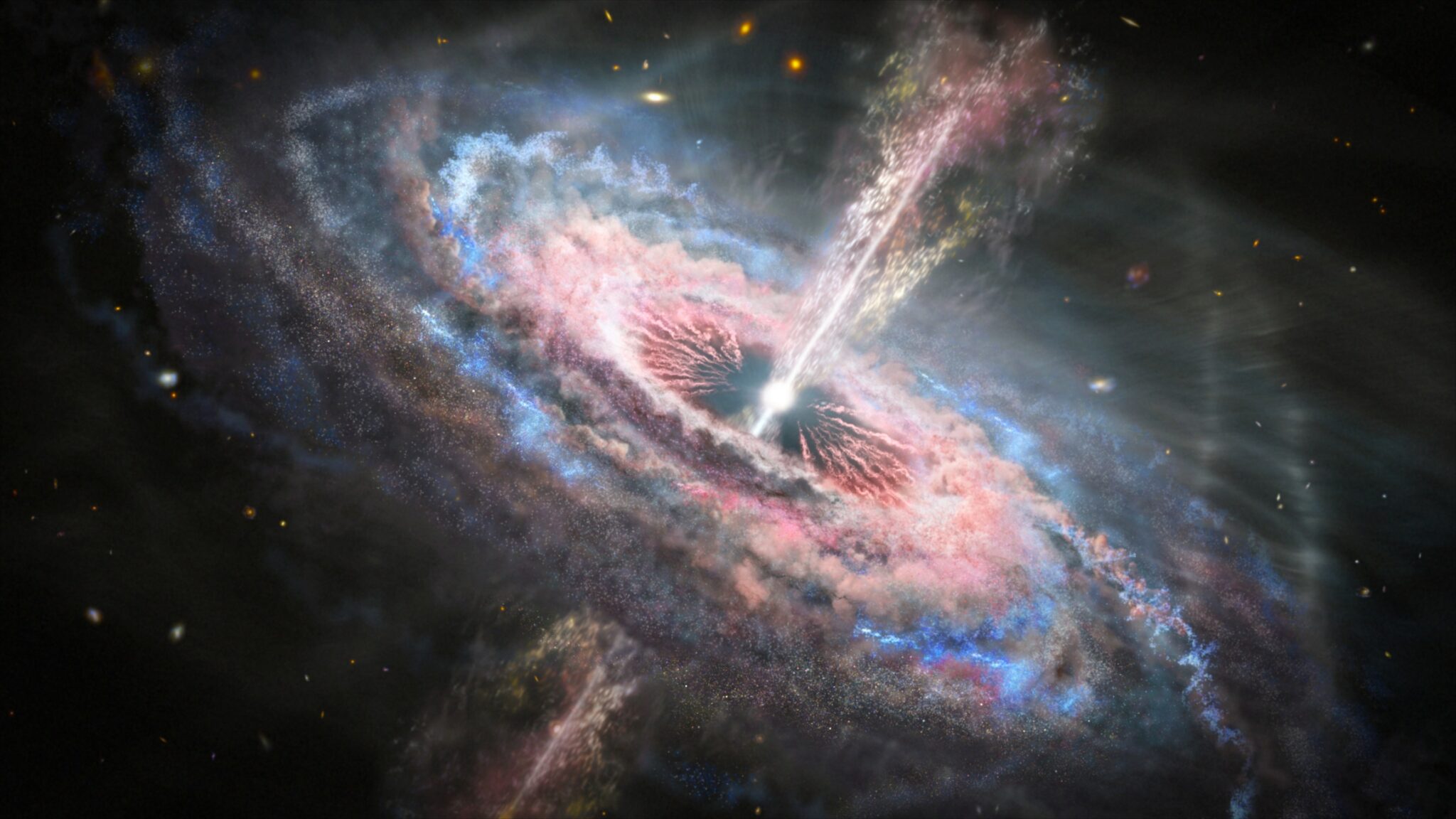A study of the Universe by the James Webb Space Telescope recently discovered unusual quasars, which are among the brightest objects in space, that exist in complete isolation, far away from other galaxies. This contradicts the ideas that quasars only arise in dense regions of matter where they can grow rapidly. The study, published in the Astrophysical Journal, opens new perspectives for understanding the origin of quasars and the development of the early Universe.

Quasars are supermassive black holes at the centers of galaxies, millions of times more massive than the Sun. They emit powerful energy due to matter falling on them or spinning around them. Until now, it was thought that such giant objects could only appear in areas where there was enough matter to “feed” them.
However, new data from the James Webb Telescope show that some quasars are located in “empty” zones, causing scientists to wonder. Anna-Christina Eilers, a physicist at the Massachusetts Institute of Technology who led the study, notes: “These quasars are far from the densest regions of the early Universe. It’s difficult to explain how these quasars could have grown so big if they appear to have nothing to feed from.”
How James Webb explores the oldest objects
Astronomers used the telescope to observe quasars that formed just 600-700 million years after the Big Bang. For comparison, our Solar System didn’t appear until 8.5 billion years after this event. James Webb, located about a million miles from Earth, captures light from distant objects as it looked billions of years ago.

“For the first time, we were able to see the environment of these quasars and understand the conditions under which they evolved,” Eilers adds. The new question that confronts scientists is: how could black holes with a mass of a billion solar masses form in such an early and “young” Universe?
Although the space telescope is able to look through clouds of dust and gas, the possibility remains that these isolated quasars are still surrounded by hidden galaxies that have not yet been able to be seen. Additional observations are needed to confirm this hypothesis.
We previously reported on how a record distant quasar turned out to be surprisingly normal.
According to space.com


